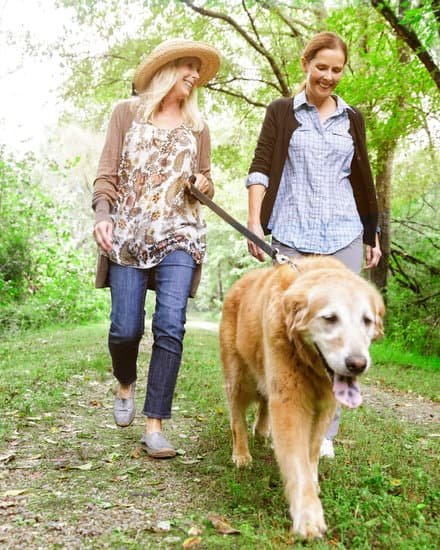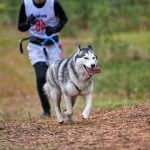Are you tired of your furry friend rushing to the door every time the doorbell rings or when someone knocks? In this guide on how to train your dog not to rush the door, we will explore the reasons behind this behavior, why it is important to address it, and effective training techniques to help your dog overcome this habit.
Dogs rushing the door is a common issue that many pet owners face. While it may seem harmless at first, it can pose potential dangers such as running out into the street or escaping from home. Understanding why dogs exhibit this behavior, whether due to excitement, anxiety, or simply curiosity, is crucial in addressing and correcting it.
Training your dog not to rush the door is essential for their safety and well-being. By establishing clear rules and boundaries around door behavior, you can prevent any accidents or mishaps that may arise from this impulsive act. Consistency is key in training your dog effectively, along with using positive reinforcement methods to encourage good behavior.
Understanding the Behavior
When your dog rushes the door every time the doorbell rings or when you’re about to go for a walk, it can be a frustrating and potentially dangerous behavior. Understanding why dogs tend to rush the door is crucial in finding effective solutions to prevent this behavior. Dogs may exhibit door rushing due to a variety of reasons, including excitement, anxiety, or simply a desire to explore the outside world.
To address this issue, it’s essential to delve into the root causes of your dog’s behavior. Excitement is a common trigger for door rushing, especially if your dog associates the sound of the doorbell with going outside or meeting new people.
Anxiety can also play a role in door rushing, as some dogs may feel anxious when they hear unfamiliar sounds or see strangers approaching. Additionally, dogs have a natural curiosity and desire to explore their surroundings, which can lead them to rush the door in search of new experiences.
To effectively train your dog not to rush the door, it’s important to consider these underlying reasons and tailor your training approach accordingly. By addressing your dog’s specific motivations for door rushing, you can develop strategies that target these behaviors and gradually teach your dog alternative responses. With patience, consistency, and positive reinforcement techniques, you can help your canine companion learn how to greet guests calmly and safely without rushing the door.
- Identify the underlying cause of your dog’s door rushing behavior
- Implement training techniques that address excitement, anxiety, or curiosity
- Use positive reinforcement methods such as treats or praise to encourage desired behaviors
Importance of Training
Understanding the Risks
Rushing the door may seem like a harmless behavior, but it can actually pose significant risks to both your dog and anyone entering or leaving your home. When a dog rushes the door, they can easily escape and potentially get lost, injured, or even hit by a car.
Moreover, a dog rushing the door can also lead to accidents where they knock over visitors or delivery personnel, causing harm to themselves and others. Understanding these risks is crucial in realizing the importance of training your dog not to rush the door.
Promoting Safety and Security
Training your dog not to rush the door is essential for promoting safety and security within your household. By teaching your furry friend to wait calmly when the doorbell rings or someone approaches, you are not only preventing potential accidents but also instilling good behavior in them.
This training helps create a controlled environment where you can confidently open the door without worrying about your dog dashing out unpredictably. Ultimately, ensuring that your dog doesn’t rush the door enhances the overall safety of everyone involved.
Fostering a Well-Behaved Companion
In addition to safety concerns, training your dog not to rush the door plays a vital role in fostering a well-behaved companion. By setting boundaries and establishing rules regarding door behavior, you are teaching your dog self-control and obedience.
Consistently reinforcing these lessons through positive reinforcement techniques will help shape their behavior positively over time. Ultimately, investing time and effort into training your canine friend not to rush the door will result in a well-mannered pet that contributes to a harmonious living environment.
Establishing Rules
When it comes to addressing the issue of your dog rushing the door, one crucial aspect is establishing rules and boundaries. Dogs thrive on structure and clear guidelines, so setting specific expectations for their behavior around the door can help mitigate any rushing tendencies. By implementing rules, you can effectively communicate to your dog what is acceptable behavior when it comes to door manners.
Here are some key pointers on how to establish rules for your dog in relation to door behavior:
- Teach your dog a “wait” or “stay” command: One effective way to prevent your dog from rushing the door is by teaching them a command that signals them to wait patiently until given permission to approach or exit. Practice this command consistently during training sessions.
- Use physical barriers: Another method to set boundaries around the door is by using physical barriers like baby gates or playpens to restrict access to the entrance. This can help prevent impulsive rushes towards the door and provide a visual cue for your dog regarding their designated area.
- Practice impulse control exercises: Engage your dog in activities that promote impulse control, such as playing games that require them to wait patiently for a reward. This can help reinforce self-control and discourage impulsive behaviors like rushing the door.
By establishing clear rules and boundaries around the door, you are laying the foundation for training your dog not to rush towards it. Consistency is key in reinforcing these guidelines, so make sure to enforce the rules each time your dog approaches the door. Remember, patience and persistence are essential when teaching your furry friend proper door etiquette.
Basic Training Techniques
Establish a Training Routine
To effectively train your dog not to rush the door, it is essential to establish a consistent training routine. Dedicate specific times each day to work on this behavior with your furry friend. This routine will help your dog understand that rushing the door is unacceptable behavior and that there are consequences for doing so. Training sessions should be short, positive, and rewarding to keep your dog engaged and motivated.
Use Positive Reinforcement Techniques
Positive reinforcement is one of the most effective methods to train your dog not to rush the door. Whenever your dog displays calm behavior near the door, reward them with treats, praise, or toys. Positive reinforcement will help your dog associate good behavior with receiving rewards, making them more likely to repeat that behavior in the future. Avoid punishment-based techniques as they can lead to fear and anxiety in your pet.
Practice Desensitization Exercises
Desensitization exercises involve gradually exposing your dog to triggers that may cause them to rush the door, such as the sound of the doorbell or someone knocking. Start by simulating these triggers in a controlled environment and rewarding your dog for remaining calm. Over time, increase the intensity of these exercises until your dog can stay relaxed even when faced with real-life scenarios like visitors arriving. Consistent practice is key to success in desensitizing your dog.
By following these training techniques consistently and patiently, you can teach your furry companion how to behave appropriately near the door without rushing towards it impulsively. Remember that each dog is unique, so it may take time for some pets to learn this new behavior. Stay committed, stay positive, and celebrate small victories along the way as you train your dog not to rush the door.
Consistency Is Key
Consistency is crucial when it comes to training your dog not to rush the door. Dogs thrive on routine and clear expectations, so it is important to consistently reinforce the desired behavior. This means practicing the training techniques regularly and ensuring that everyone in the household is on the same page when it comes to enforcing the rules regarding door behavior.
One way to maintain consistency is by setting up a schedule for training sessions and sticking to it. Repetition is key in helping your dog understand what is expected of them, so try to incorporate door training into your daily routine. Consistent practice will help solidify the behavior you want to see from your dog and reduce the likelihood of them rushing the door.
In addition to regular training sessions, consistency also extends to everyday interactions with your dog. Reinforce good behavior by rewarding them whenever they exhibit calmness or restraint around the door. This could be through verbal praise, treats, or toys – whatever motivates and rewards your dog. By consistently reinforcing positive behavior and redirecting negative behavior, you will help your dog understand what is acceptable when it comes to door manners.
Addressing Specific Scenarios
Dogs rushing the door can be a common issue for many pet owners, but it is essential to address this behavior to prevent potential dangers such as escapes or accidents. Training your dog not to rush the door is crucial for their safety and your peace of mind. By understanding the reasons behind this behavior and implementing effective training techniques, you can successfully modify your dog’s behavior.
One important aspect of preventing door rushing is establishing rules and boundaries for your dog. This includes teaching them basic commands like “stay” or “wait” when approaching the door. Consistency in enforcing these rules will help reinforce the desired behavior over time. Positive reinforcement methods, such as rewarding your dog with treats or praise when they follow the rules, can also be an effective way to encourage good behavior.
Addressing specific scenarios where door rushing is likely to occur, such as when guests arrive or deliveries are made, requires additional training and management. For instance, you can practice desensitization exercises with your dog by simulating these scenarios and gradually teaching them to remain calm and obedient.
Planning ahead for these situations and having a strategy in place can help prevent unwanted behaviors like door rushing. Remember that patience and persistence are key when training your dog not to rush the door, and consistent practice will yield positive results over time.
| Training Techniques | Benefits |
|---|---|
| Establishing rules and boundaries | Reinforces desired behavior |
| Positive reinforcement methods | Encourages good behavior through rewards |
| Desensitization exercises for specific scenarios | Helps prepare dogs for real-life situations |
Monitoring Progress
Once you have implemented the training techniques to prevent your dog from rushing the door, it is essential to monitor their progress regularly. Monitoring your dog’s behavior will help you evaluate whether the training methods are effective and if any adjustments are necessary. Keep a close eye on how your dog reacts when there is a knock at the door or the doorbell rings.
One way to monitor progress is by keeping a journal of your dog’s behaviors around the door. Note down any instances of rushing, barking, or other unwanted behaviors. This can help you identify patterns and understand what triggers these reactions in your dog. By tracking their progress, you can also celebrate small victories and stay motivated throughout the training process.
In addition to monitoring your dog’s progress, be prepared to make adjustments to the training as needed. If certain techniques are not yielding results or if your dog is still rushing the door despite consistent training, it may be time to reassess your approach. Consult with a professional trainer if necessary to seek additional guidance on modifying your training method for better results.
| Monitoring Tips | Tracking Progress |
|---|---|
| Keep a journal of behaviors | Note down instances of rushing |
| Stay consistent with training | Celebrate small victories |
| Seek professional guidance if needed | Make adjustments as necessary |
Conclusion
In conclusion, training your dog not to rush the door is crucial for their safety and the peace of mind of both you and your guests. By understanding the reasons behind this behavior and implementing consistent training techniques, you can effectively address this issue. Remember, it is essential to establish clear rules, provide positive reinforcement, and remain patient throughout the training process.
Consistency is key when it comes to teaching your dog proper door manners. By reinforcing good behavior and addressing specific scenarios, such as guests arriving or deliveries, you can prevent door rushing effectively. Monitoring your dog’s progress and making adjustments as needed will help ensure long-term success in correcting this behavior.
In the end, remember that training takes time and effort. Be patient with your furry companion and stay persistent in your efforts to train them not to rush the door. With dedication and a positive attitude, you can help your dog understand and respect boundaries at the door, creating a safer environment for everyone involved. So take the time to train your dog properly – it will pay off in the long run.
Frequently Asked Questions
How Do I Stop My Dog From Rushing Out the Door?
To prevent your dog from rushing out the door, you can start by implementing basic obedience training. Teaching your dog commands like “sit” or “stay” can help them learn self-control and prevent impulsive behavior when it comes to doorways. Additionally, practice desensitizing your dog to the door by repetitive exposure and reward-based training.
Why Do Dogs Rush the Door?
Dogs tend to rush the door because of their natural instincts and excitement. They may associate the sound of keys or the sight of someone leaving with something exciting happening outside.
It could also be a way for them to explore new sights and smells, as dogs are naturally curious animals. Rushing the door could simply be an expression of their eagerness.
How Do I Stop My Dog From Going Crazy at the Door?
One effective way to stop your dog from going crazy at the door is by providing mental and physical stimulation throughout the day. A tired and mentally stimulated dog is less likely to exhibit hyperactivity at the door.
Engage in activities like puzzle toys, interactive games, or long walks to keep your dog entertained and reduce their overall excitement level when near the door. Consistency is key in reinforcing calm behavior at the doorway through positive reinforcement techniques such as treats or praise when they remain calm instead of reacting impulsively.

Welcome to the blog! I am a professional dog trainer and have been working with dogs for many years. In this blog, I will be discussing various topics related to dog training, including tips, tricks, and advice. I hope you find this information helpful and informative. Thanks for reading!





